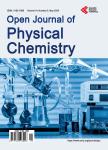Evaluation of TiO_(2),ZnO,CuO and Ga_(2)O_(3)on the Photocatalytic Degradation of Phenol Using an Annular-Flow Photocatalytic Reactor
作者机构:Department of Chemical Systems EngineeringLaboratory of Catalytic Processes Development(LDPC)Faculty of Chemical EngeneeringUNICAMP-University of CampinasCampinasBrazil Department of Analytical Chemistry InstituteUNICAMP-University of CampinasCampinasBrazil
出 版 物:《Open Journal of Physical Chemistry》 (物理化学期刊(英文))
年 卷 期:2012年第2卷第3期
页 面:135-140页
基 金:This project was financially supported by National Council for Scientific and Technological Development(CNPq) National Council for the Improvement of Higher Education(CAPES)
主 题:Phenol TiO_(2) ZnO CuO Ga_(2)O_(3) Heterogeneous Photocatalysis
摘 要:Even with rigorous environmental regulations, phenol still is a major contaminant. One possible solution is the use of heterogeneous photocatalysis due to low chemical addition, feasibility and reliability to be implanted on cost-effective industrial process. TiO2 is the most employed photocatalyst because of its favorable (photo) chemical properties and ZnO is considered one of the best alternative for that. Other oxides were tested in lesser proportions, like CuO and Ga2O3. When the photocatalyst is dispersed as slurry, higher degradation rates are achieved due to high solid to liquid contact area when compared with supported form. The aim of this work was to develop a batch recirculating photocatalytic reactor and evaluate its efficiency when assisted by the photocatalysts TiO2 P25, ZnO, CuO and β-Ga2O3. TiO2 achieved 95% mineralization after 200 min reaction in an average degradation rate of 0.68 mg·L﹣1·min﹣1 and ZnO was less efficient (0.41 mg·L﹣1·min﹣1). Ga2O3 and CuO presented poor performance, mainly due to low surface area for the CuO syntesized and the absorption of the UV radiation by the reactor walls, decreasing Ga2O3 activity. Degradation intermediates were detected in diverse concentrations and at different operational times for each oxide tested, which indicate different degradation mechanisms.



